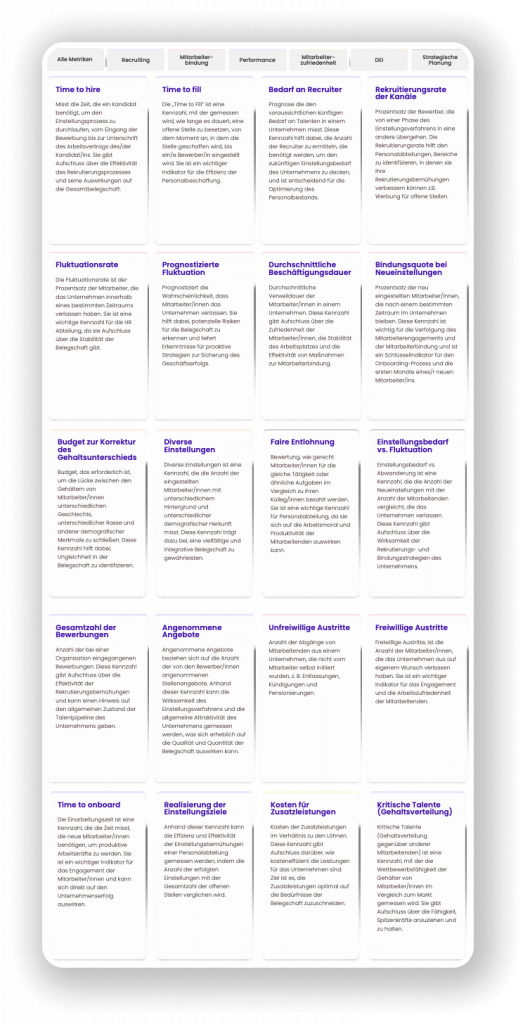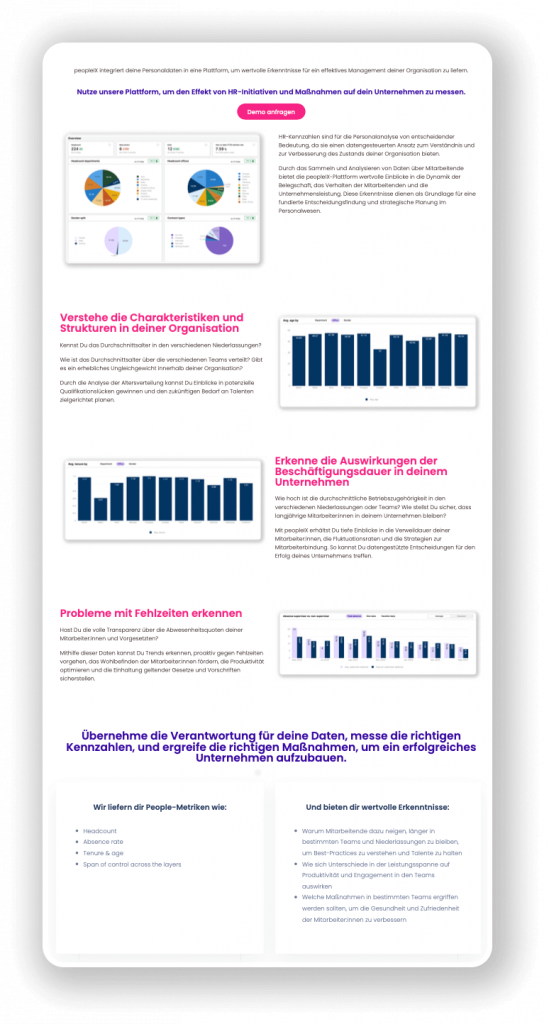21 Apr

In everyday business, the terms HR Metrics and HR Analytics are often used to describe data processing and analysis in the HR department. However, there is often disagreement about what exactly is meant by them, and they are often mistakenly used as interchangeable synonyms. However, it is important to recognize that HR Metrics and HR Analytics have fundamental differences that should not be neglected.
So what is the difference between HR analytics and HR metrics?
HR Metrics provide the foundation for HR Analytics by aggregating a variety of data and information into specific metrics. However, without context, metrics do not provide information about the cause behind the data. They only allow you to compare different data points, such as year-over-year changes in turnover rates. Metrics, then, aggregate information into ratios and enable the identification of trends over time.
However, metrics alone do not provide root cause analysis and only show the trend between different time periods or differences between different data points. Nevertheless, metrics are an important basic building block for successful HR Analytics. In our HR Metrics Library you will find the most important HR Metrics from the areas of recruiting, retention, performance, engagement, DEI and strategic planning:
HR Analytics builds on the metrics and data points to tell you the story behind those numbers. HR Analytics provides insights into the reasons for changes in the metrics, identifies trends and patterns, and provides specific recommendations for future action to move the metrics in the desired direction. HR analytics thus gives context to your data and enables the various stakeholders to draw the right conclusions from it. If you want to learn more about the applications of HR Analytics, take a look at our Use Cases:
The transition from HR metrics to HR analytics
Now that we’ve developed a common understanding of HR metrics and HR analytics, we’d like to show how to successfully make the transition from metrics to analytics.
Step 1: Start with your data
As we already know, metrics aggregate a variety of data into one metric. To get started with metrics, it is critical to select the right data of good quality. Proper data structure in HR systems and high data quality are the key components that should be improved before we invest in calculating metrics for HR reports. Learn how to improve HR data quality for key HR analytics in our blog post Improving your HR Data Quality for Critial HR Analytics.
Step 2: Understand the HR system landscape
This step may sound simple, but it’s often challenging. Collecting basic data is easy, but aggregating it into important metrics is more difficult because data points from different systems are often needed (e.g., from the recruiting system and the HR management system). Platforms like peopleIX automate this process by bringing all the data from your systems together in one place.
Step 3: Select the relevant metrics
The third step is to select the most relevant HR metrics for your organization. These metrics should be linked to business goals. For each metric, a target value should be set to which future actions can be aligned.
Step 4: Implement the right measures
HR analytics does not end with the presentation of analytics. It’s important to derive the right insights and actions from the analytics and discuss them with the appropriate business partners. In this way, you get all the key stakeholders on board and create the foundation for future business success with the appropriate measures and their implementation.
HR analytics is much more than just HR metrics. It provides the right data for strategically important decisions, not only for HR, but for the entire company.
If you want to get started with HR analytics in your organization, we have more exciting blog articles to help you do so:
More about the topic
HR Metrics Library
Use Cases
Want an overview of the most important HR metrics? Then check our HR Metrics Library. There you will find the most important metrics from the areas of recruiting, retention, performance, people happiness, DEI and strategic planning.
Or discover our use cases in the areas of People, Recruiting, Retenion and DEI and learn how People Analytics can take your organization to the next level.
Recent Posts

Investing in Your HR Team: The Impact on Company Growth
January 31, 2024Categories
- Analytics (2)
- Collaboration (1)
- Customer Sucess Stories (1)
- Data Management (1)
- Foundations (9)
- Human Resources (HR) (3)
- Platform (1)
- Recession Times (2)
- Tech Stack (1)
- Use Cases (4)
PRODUCT
People Planning & Scenarios
Sharing & Collaboration
RESOURCES
LEVEL UP
STAY IN THE LOOP
Copyright © 2024 peopleIX GmbH. All rights reserved.






